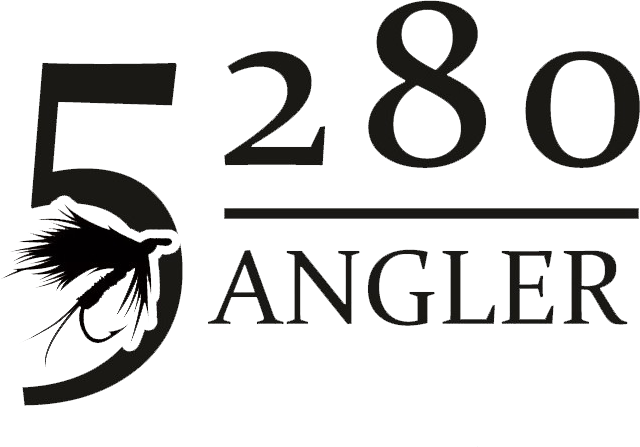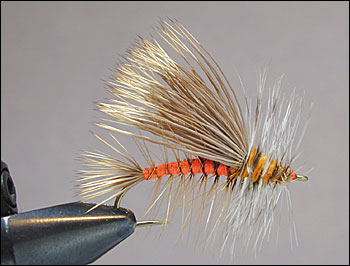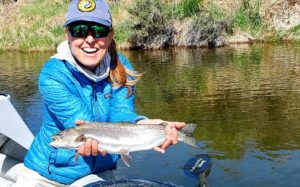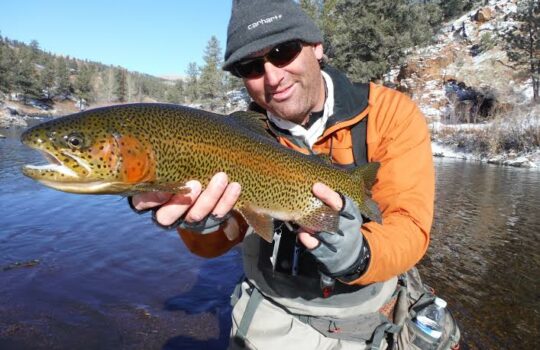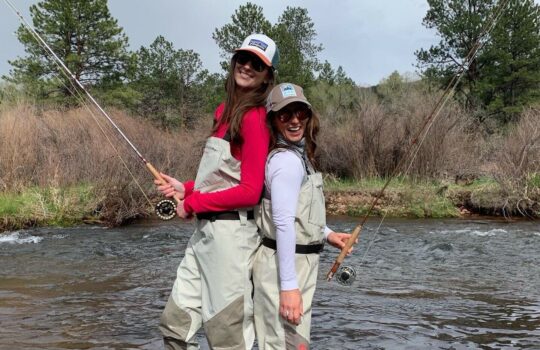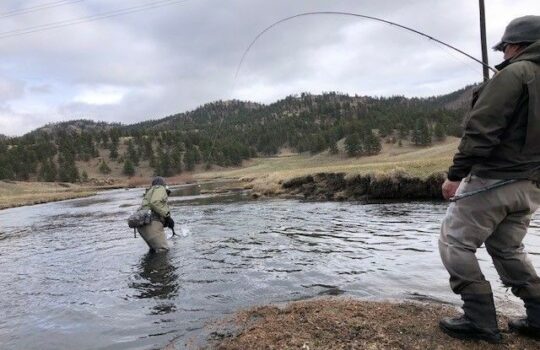I can’t say for sure when the concept of the attractor fly first gained popularity, but it was sometime in the last twenty five years shortly after the introduction of the tandem-fly system and its popularity began to grow. I remember back in those days when none knew what a strike indicator was, and everyone it seemed was throwing dry flies – except for those guys who stripped wet flies and streamers.
The purpose of the attractor is to use it as a means of attracting the fish’s attention. Once the fish key’s in on the attractor it will usually zero on the dropper fly and that is usually the fly the fish will take. However, never underestimate the importance of the point fly; I have caught a lot of fish on the attractor itself.
There are many variations of the attractor fly concept. Some attractor flies are actually a lifecycle phase of a particular insect indigenous to that particular piece of water such as a bead headed pheasant tail with another smaller nymph or emerger of the same insect species dropped off of it. You may use a fly pattern that really doesn’t imitate anything such as a bead headed rainbow warrior as the attractor fly. You don’t necessarily have to use a bead headed pattern as the attractor you can use whatever you feel will suffice as an attractor for the type of insect you are copying and the depth of water you are fishing.
Utilizing materials that will add flash to the attractor will enhance its ability to act as a trigger mechanism for the trout, inducing it to strike at the fly or the dropper. In my research of the entomology of flies and their creation I discovered that Gary Lafontaine used antron in the construction of his Sparkle Pupa to imitate the air trapped in the pupal shuck as the Caddis Pupa ascended to the surface. This, he discovered, was the trigger mechanism that induced the strike. It is for this reason that I like to use loop wing emergers.
In the summer and fall months I like to use a hopper, or stimulator pattern, as my attractor with another dry, emerger, or nymph pattern dropped off of that. There is Barr’s Hopper-Copper-Dropper rig consisting of a Terrestrial pattern on the surface, with a Copper John or a bead-head of your choice dropped off of the terrestrial and then another fly perhaps a nymph or emerger pattern dropped off the bead-head. In the winter months I like to use subsurface attractors as there really isn’t much surface activity during the colder days – save for the intermittent BWO and/or the more prolific midges. These can be a Pat’s Rubber legs Stonefly, San Juan Worm, or even a Rainbow Warrior. Again, depending on the water, time of year, the insect activity and the fish you are after will determine the combination you use…and the variations are many.
I have enjoyed excellent success with a dual hopper rigs in the summer, a Hopper/Parachute Adams, stimulator/Parachute Adams, Hopper/Copper John, Stimulator/Copper John, Stimulator/Emerger, Elk Wing Caddis/Caddis Pupa, and Parachute Adams/Emerger combinations. Again, these are a few of my favorite combinations and the list of possibilities is varied.
I am of the firm belief that you have to be innovative and experiment on the water you fish to find the combination that works for you. Don’t be afraid to change flies…but try changing sizes first before switching patterns if you feel that what you are using is correct. Sometimes, the difference between a #12 and a #14, or, a #16 and a #18 is all it takes to coerce the trout into taking your fly. If after changing sizes you continue to get relatively few strikes then go ahead and change out patterns.

Okay, two really good attractor patterns I am going to illustrate here are the Bead Head Rainbow Warrior and the Stimulator.
RAINBOW WARRIOR
Hook: TMC 2457 #14–20 Bead: Silver/Gold Tungsten, Silver/Gold standard bead, Mercury Bead
Thread: 8/0 Red Uni-Thread Tail: Pheasant Tail Fibers Abdomen: Pearl Tinsel, Medium
Wing Case: Stub End of Pearl Tinsel from Abdomen Thorax: Wapsi Sow Scud Dubbing, Rainbow

STIMULATOR
Hook: TMC 2312 #6-14 or TMC 200 R #6-14 Thread: Fire Orange 70 Denier, or 6/0 Orange Uni-thread
Tail: Natural Cow Elk Hair Rib: Fine Copper or Gold Wire Abdomen: Gold, ginger, amber
Body hackle: Brown Rooster or Light Blue Dun Wing: Natural Cow Elk Body
Front Hackle: Grizzly or Furnace Hackle Thorax: Fire Orange/Gold Antron
